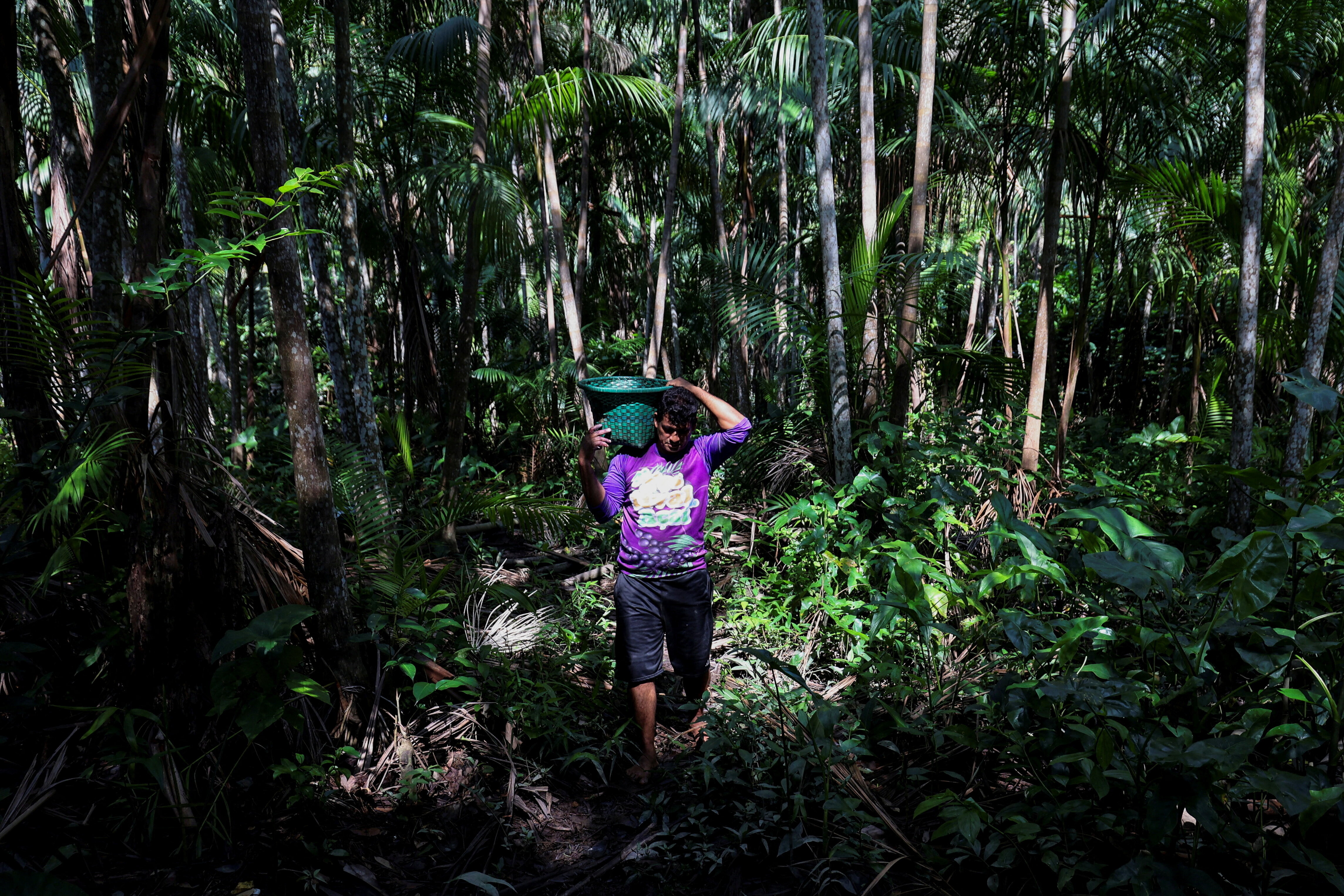Ending global hunger need not cost the earth – if we invest now

We can create a brighter future if we invest in agricultural innovation Image: REUTERS/Rupak De Chowdhuri
- The COVID-19 crisis has left up to 132 million additional people facing hunger this year.
- Even before the pandemic, a quarter of children under the age of five were stunted due to under-nourishment.
- Agriculture attracts low levels of research investment despite its huge potential to lift up lives and economies.
This year should have been a milestone for global climate action, setting out the road towards fulfilling the Paris Agreement, including more sustainable food production.
Yet, not only has the COVID-19 pandemic postponed crucial climate talks, it has also proved a major setback in tackling global hunger and malnutrition, putting food security in a precarious position.
In the midst of a climate emergency, the COVID-19 crisis has left up to 132 million additional people facing hunger this year on top of the 690 million already undernourished worldwide, including a quarter of children under five, who are stunted.
The faster we tackle world hunger, the less it will cost in the long run – economically, societally and environmentally. A functioning food system, which delivers healthy, nutritious and affordable diets and rural livelihoods within planetary boundaries, underpins the goals of “One Health”, a concept that links human, animal, and planetary health.
But to develop more sustainable food systems, governments, NGOs, resource partners and the private sector must know where and how much to invest, fast-track funding to where it is most vital, and forge strong partnerships to make that change happen.
Until now, investment in agricultural research has lagged behind other sectors despite its contribution to human and environmental health. For example, in 2011, the combined public investment in agricultural research worldwide was an estimated $42 billion, while in the same year, the US alone invested $36 billion in health research and development.
The need for more targeted interventions through funding mechanisms like the Global Agriculture and Food Security Program (GAFSP) is highlighted in a new report from research partnership Ceres2030, which provides recommendations on not only the interventions needed but also the spending allocation for ending global hunger.
The potential is enormous. CGIAR estimates the return on investment from agricultural innovations is 10:1, which makes for a compelling business case.
This is precisely why CGIAR has set up a COVID-19 Hub in collaboration with the London School of Hygiene & Tropical Medicine to provide a coordinated resource that identifies the most promising developments and solutions to support the pandemic recovery and global resilience-building goals through agriculture.
In Bangladesh, for instance, researchers have provided government ministries with recommendations for mitigating food systems disruption, conducting telephone surveys with vulnerable groups and food value chain actors to monitor impacts and needs.
Another challenge is knowing exactly where to channel funding. The Ceres2030 report presents a costed blueprint for tackling food insecurity to guide investments towards those that will make the biggest difference at the lowest cost.
Taking regional contexts into account, the report outlines three main types of intervention to combat food insecurity – financial, behavioural and technological.
A behavioural intervention, for example, might involve educating families about the nutritional benefits of biofortified crops such as orange-fleshed sweetpotato, which can address micronutrient deficiencies suffered by 29 million people in sub-Saharan Africa and reduce the incidence of stunting and blindness.
By integrating breeding programmes with marketing strategies and nutrition education for farmers and consumers, rural families have incorporated biofortified, vitamin A-rich sweetpotato into their diets to improve health standards and reach their full potential.
Yet gaps in knowledge do still exist and we need agricultural research to fill them. Scaling up these kinds of intervention requires more research that goes beyond staple foods to incorporate a more diverse range of healthy foods into the diets of the poor.
It is research and development on a global scale that will not only guide successful interventions, but also minimise the cost to the environment.
As in public health, global hunger can only be tackled by treating the causes rather than the symptoms. Far-sighted investments in agricultural research and development, made over a sustained period at steady intervals, have proven to yield vast benefits for vulnerable communities, as well as global prosperity and security.
The benefits are not just for people, but for the planet too. CGIAR innovations in climate mitigation and adaptation have shown that increasing productivity amongst small-scale farmers and boosting global food security can have positive impacts on the environment.
The concept of climate-smart villages, for instance, is being mainstreamed throughout Southeast Asia, helping smallholder farmers become more productive, food-secure and resilient to climate change, while mitigating environmental impacts.
The challenge of global hunger is inextricable from the survival of the planet: one cannot be compromised over the other.
But with more funding for vital agricultural research and development, and innovations ready for adoption to tackle hunger within the limits of natural resources, ending global hunger need not cost the earth.
Don't miss any update on this topic
Create a free account and access your personalized content collection with our latest publications and analyses.
License and Republishing
World Economic Forum articles may be republished in accordance with the Creative Commons Attribution-NonCommercial-NoDerivatives 4.0 International Public License, and in accordance with our Terms of Use.
The views expressed in this article are those of the author alone and not the World Economic Forum.
Stay up to date:
SDG 02: Zero Hunger
Related topics:
Forum Stories newsletter
Bringing you weekly curated insights and analysis on the global issues that matter.








